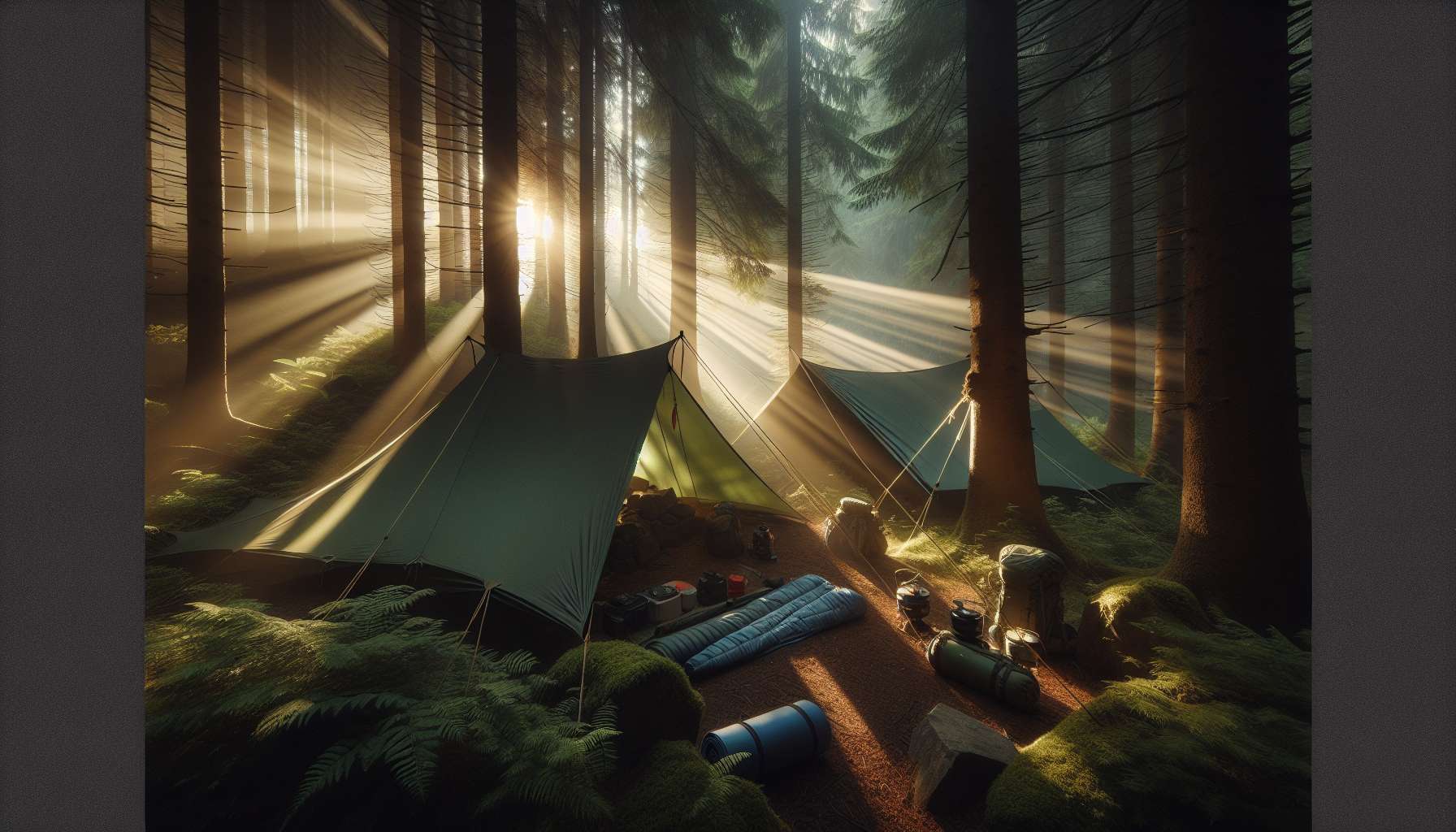Camping Tarps: A Comprehensive Guide to Outdoor Shelter
When it comes to camping, one of the most versatile and essential pieces of equipment you can have in your arsenal is a camping tarp. Whether you’re a seasoned outdoor enthusiast or a novice camper, the benefits of using a tarp during your outdoor adventures are undeniable. From providing shelter from the elements to creating a cozy outdoor living space, camping tarps offer a wide range of uses that can enhance your camping experience in numerous ways. In this comprehensive guide, we will delve deep into the world of camping tarps, exploring their history, uses, benefits, and much more. So, grab your camping gear and let’s dive into the world of camping tarps!
The History of Camping Tarps
While camping tarps may seem like a modern invention, their history dates back centuries. Tarps, short for tarpaulins, were originally made from heavy-duty canvas or cotton fabric coated with tar, hence the name. These early tarps were used primarily for covering cargo on ships or protecting goods during transport. As camping gained popularity in the late 19th and early 20th centuries, adventurers began using tarps to create makeshift shelters in the wilderness.
Over time, camping tarps evolved to become more lightweight, durable, and versatile. Today, modern camping tarps are typically made from materials like nylon, polyester, or polyethylene, making them waterproof, UV-resistant, and easy to pack and carry. With advancements in technology and manufacturing processes, camping tarps have become an essential piece of gear for campers, hikers, and outdoor enthusiasts worldwide.
The Benefits of Using Camping Tarps
There are numerous benefits to using camping tarps during your outdoor adventures. Here are some of the key advantages:
1. Shelter from the Elements
One of the primary functions of a camping tarp is to provide shelter from the elements. Whether it’s rain, wind, or harsh sunlight, a tarp can create a protective barrier between you and the outdoor conditions. By setting up a tarp over your campsite, you can stay dry during a downpour, shielded from strong winds, or cool and shaded on a hot summer day.
2. Versatility
Camping tarps are incredibly versatile and can be used in a variety of ways. In addition to providing shelter, tarps can also be used as ground cover, picnic blankets, makeshift tents, hammock rainflys, or even as improvised first aid shelters. Their lightweight and compact design make them easy to pack and carry, adding minimal weight to your camping gear.
3. Cost-Effective
Compared to traditional tents or shelters, camping tarps are a cost-effective option for outdoor enthusiasts on a budget. Tarps are typically more affordable than tents and can be used in conjunction with other camping equipment to create a complete camping setup. Additionally, tarps are durable and long-lasting, providing years of reliable use without the need for frequent replacement.
4. Breathability
Unlike traditional tents, which can trap heat and condensation, camping tarps offer excellent breathability. By allowing air to flow freely through the tarp, you can stay cool and comfortable in warm weather conditions. This breathability also helps to reduce condensation buildup inside your shelter, keeping you dry and comfortable throughout the night.
How to Choose the Right Camping Tarp
With a wide variety of camping tarps available on the market, choosing the right tarp for your needs can be a daunting task. Here are some factors to consider when selecting a camping tarp:
1. Size
The size of the tarp will depend on the number of people in your camping party and the amount of gear you need to cover. Larger tarps offer more coverage and protection but may be heavier and bulkier to pack. Consider the dimensions of the tarp and how it will fit into your camping setup before making a purchase.
2. Material
Camping tarps are typically made from nylon, polyester, or polyethylene, each with its own advantages and disadvantages. Nylon tarps are lightweight and durable, making them an excellent choice for backpackers and hikers. Polyester tarps are more UV-resistant and waterproof, ideal for extended outdoor use. Polyethylene tarps are the most affordable option but may not be as durable or long-lasting as other materials.
3. Waterproofing
When choosing a camping tarp, be sure to consider its waterproofing capabilities. Look for tarps with a waterproof coating or treatment to ensure that you stay dry during rainy weather. Additionally, consider the seams and grommets on the tarp, as these areas are more susceptible to leaks. A high-quality tarp will have reinforced seams and rustproof grommets for added durability.
4. Weight
If you plan on backpacking or hiking with your camping tarp, the weight of the tarp will be an important factor to consider. Lightweight tarps are easier to carry over long distances and won’t add unnecessary bulk to your pack. Look for tarps made from lightweight materials like nylon or polyester that offer a good balance between weight and durability.
Setting Up Your Camping Tarp
Once you’ve chosen the right camping tarp for your needs, it’s time to set up your shelter. Here are some tips for setting up your camping tarp:
1. Select a Suitable Location
Choose a flat, level area for your campsite that is free from rocks, branches, or other debris that could damage your tarp. Look for natural features like trees or boulders that can serve as anchor points for your tarp.
2. Secure the Tarp
Using guylines, stakes, or trekking poles, secure the corners and edges of your tarp to create a stable shelter. Be sure to pull the tarp taut to prevent sagging and ensure proper water runoff. Adjust the height and angle of the tarp to provide adequate coverage and protection from the elements.
3. Consider Ventilation
To prevent condensation buildup inside your shelter, consider leaving gaps or vents along the edges of the tarp to allow for airflow. You can also prop up the sides of the tarp with trekking poles or branches to create a more open and airy shelter.
4. Add Personal Touches
Once your tarp shelter is set up, you can personalize it with additional features like a ground cloth, sleeping pad, or camp chairs. Create a cozy and inviting outdoor living space by adding lanterns, string lights, or outdoor rugs. Get creative with your setup and make your tarp shelter feel like home away from home.
Expert Opinions
According to outdoor expert and wilderness survival instructor, John Smith, “Camping tarps are a versatile and essential piece of gear for any outdoor enthusiast. Their lightweight and compact design make them a practical choice for backpackers, hikers, and campers who want to travel light but still have reliable shelter. With the right tarp and proper setup, you can stay dry, comfortable, and protected from the elements no matter where your adventures take you.”
Conclusion
To wrap things up, camping tarps are a valuable tool for anyone who enjoys spending time outdoors. Whether you’re camping in the backcountry, hiking through the wilderness, or simply relaxing in your backyard, a camping tarp can provide the shelter and protection you need to enjoy your outdoor adventures to the fullest. By choosing the right tarp, setting it up properly, and adding your personal touches, you can create a comfortable and inviting outdoor shelter that enhances your camping experience. So, next time you head out into the great outdoors, don’t forget to pack your camping tarp and discover the endless possibilities it offers!




